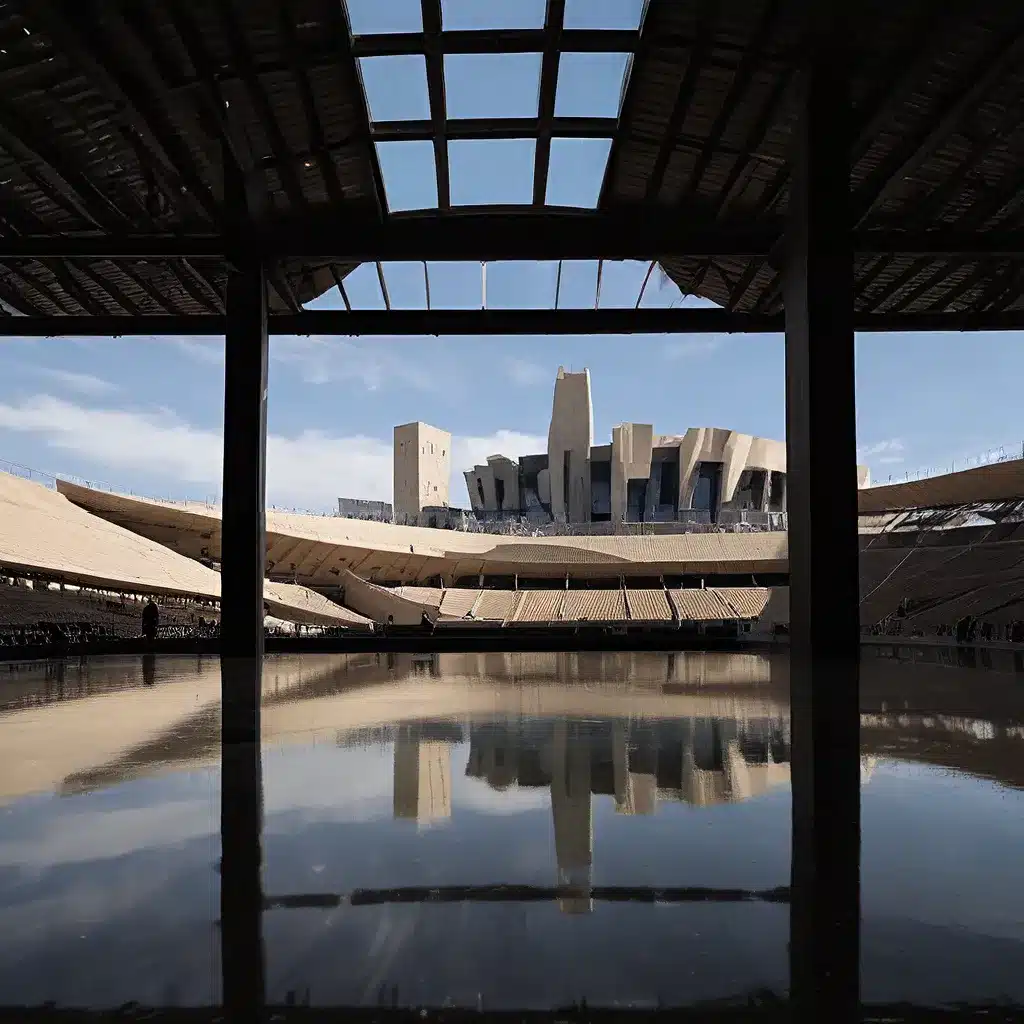
The Palau Sant Jordi in Barcelona is a true architectural marvel and a testament to the city’s innovative spirit. Nestled upon the iconic Montjuïc Hill, this multi-purpose indoor arena has become a renowned landmark, not only for its stunning design but also for its role in shaping the city’s cultural and sporting landscape.
Transforming the Barcelona Skyline
Constructed in the early 1990s as part of Barcelona’s preparations for the 1992 Summer Olympics, the Palau Sant Jordi was designed by the renowned Japanese architect Arata Isozaki. His vision was to create a structure that would seamlessly blend functionality and aesthetics, resulting in a building that has become an integral part of the city’s skyline.
The arena’s striking silhouette, characterized by its distinctive arched roof, is immediately recognizable. This innovative design not only provides excellent acoustics and sight lines for events but also serves as a visual representation of Barcelona’s ambitious transformation. The Palau Sant Jordi’s construction was a crucial element in the city’s urban regeneration efforts, which saw the once-industrial waterfront transformed into a vibrant hub of activity and leisure.
A Versatile Venue for Sports and Entertainment
The Palau Sant Jordi’s versatility is what truly sets it apart. Capable of hosting a wide range of events, from international sporting competitions to world-class concerts and cultural performances, this arena has become a multifunctional hub that caters to the diverse interests of Barcelona’s residents and visitors alike.
During the 1992 Olympics, the Palau Sant Jordi played a pivotal role, serving as the venue for various events, including gymnastics, volleyball, and handball. The arena’s impressive size and state-of-the-art facilities made it an ideal choice for these high-profile competitions, and its legacy as an Olympic venue has continued to shape its identity.
Architectural Masterpiece and Landmark
The Palau Sant Jordi’s architectural significance extends beyond its functional capabilities. Isozaki’s design is a masterful blend of modernist and postmodernist elements, creating a structure that is both visually striking and harmonious with its surroundings.
The building’s curved roof, which is supported by a series of steel arches, is a true engineering marvel. The use of natural light and the integration of materials like glass and steel contribute to the arena’s overall sense of lightness and elegance. This architectural prowess has earned the Palau Sant Jordi numerous accolades, including its designation as a UNESCO World Heritage Site in 1984.
Beyond its aesthetic appeal, the arena has become a beloved landmark in Barcelona, a symbol of the city’s commitment to innovation and its unwavering spirit. Visitors to the Palau Sant Jordi can’t help but be awed by its impressive scale and the seamless integration of its form and function.
Hosting a Diverse Range of Events
The Palau Sant Jordi’s versatility is one of its greatest assets. Over the years, it has played host to a wide range of events, from international sporting competitions to world-renowned concerts and cultural performances.
In the realm of sports, the arena has welcomed some of the biggest names in basketball, volleyball, and handball, playing a crucial role in Barcelona’s status as a global sports hub. The Palau Sant Jordi has served as the home venue for the Futbol Club Barcelona (FC Barcelona) basketball team, providing a state-of-the-art facility for their games and training.
But the Palau Sant Jordi’s appeal extends far beyond the world of sports. It has become a premier destination for music lovers, having hosted concerts by some of the biggest names in the industry, including U2, Madonna, Coldplay, and Beyoncé. The arena’s impressive acoustics and state-of-the-art sound system have made it a favorite among touring artists and their fans.
In addition to sports and music, the Palau Sant Jordi has also played host to various cultural events, such as circuses, ice shows, and dance performances. Its versatile layout and adaptable infrastructure have allowed it to cater to a wide range of audience needs, cementing its status as a true multi-purpose venue.
Integrating with the Surrounding Urban Landscape
The Palau Sant Jordi’s impact on Barcelona extends beyond its role as a world-class event venue. The arena’s strategic location on Montjuïc Hill has allowed it to become an integral part of the city’s urban landscape, seamlessly integrating with the surrounding parks, museums, and cultural attractions.
The arena’s proximity to the Museu Nacional d’Art de Catalunya (MNAC) and the Fundació Joan Miró art museum has created a vibrant cultural hub, where visitors can explore a range of artistic experiences. The nearby Parc de Montjuïc, with its lush gardens and panoramic views, provides a peaceful respite from the bustling city, offering a perfect complement to the Palau Sant Jordi’s dynamic energy.
The arena’s integration with the broader urban landscape has also extended to its transportation links. Visitors can easily access the Palau Sant Jordi via the city’s efficient public transportation system, with the nearby Espanya metro station providing a convenient connection to the rest of Barcelona.
Continuing the Legacy of Innovation
As Barcelona’s architectural and cultural landscape continues to evolve, the Palau Sant Jordi remains a shining example of the city’s commitment to innovation and progress. The arena’s ongoing renovations and upgrades, such as the recent installation of a state-of-the-art LED lighting system, ensure that it remains at the forefront of event technology and sustainability.
The Palau Sant Jordi’s legacy as a versatile and iconic venue has also inspired the development of other innovative sports and entertainment facilities in Barcelona. The city’s continued investment in its infrastructure and cultural assets has solidified its reputation as a global destination for sports, music, and the arts.
For visitors to Barcelona, a visit to the Palau Sant Jordi is a must. Whether you’re attending a thrilling sporting event, a captivating concert, or simply marveling at the arena’s impressive architecture, the Palau Sant Jordi offers a truly unforgettable experience that captures the essence of this vibrant and forward-thinking city.
Explore more iconic stadiums and arenas from around the world on OldStadiumJourney.com, where you’ll find fascinating stories and insights about the world’s most remarkable sports and entertainment venues.

